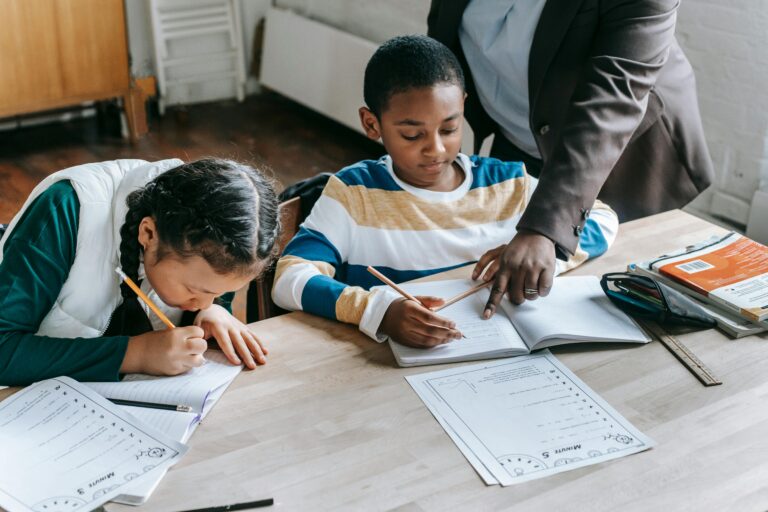When was the last time you met one-on-one with your students to discuss their academic progress? Could your students effectively articulate their strengths and areas for growth if questioned? If your responses lean towards infrequent or never, you might be overlooking a potent strategy for fostering student ownership of their learning journey.
The National Institute for Excellence in Teaching defines Student Ownership as the capacity of students to articulate what they are learning, why they are learning it, the strategies aiding their learning, and how they intend to apply these strategies in the future. In contemporary K-12 education, there has been a notable emphasis on student engagement. At CT3, the calculation of student engagement lies at the core of Real-Time Teaching Coaching. Student engagement is pivotal for ensuring students possess the highest chance to master content and excel at cognitively demanding tasks. However, once engagement is attained, how do we propel towards student ownership? This transition from student engagement to student ownership represents a high-level shift achievable through deliberate efforts in crafting classroom experiences to support such a shift.
During my tenure as a high school educator in PSL, FL, I frequently pondered the challenges impeding student achievement in my 10th to 12th-grade Earth Science class. This puzzled me, as I harbored a steadfast belief in every student’s potential for success. Upon observing unsatisfactory academic outcomes for two of my students, I proactively scheduled individual check-ins to delve into their challenges and ascertain how I could provide support. The insights gleaned during these sessions facilitated the development of collaborative plans aimed at ensuring their academic success.
During one such session, a student revealed his struggles with managing his finances independently as he lived alone, grappling with the complexities of bill payment—a poignant reminder of the real-world challenges impeding his academic focus. Our one-on-one session seamlessly transitioned into a tutorial on practical life skills, underscoring the importance of addressing students’ holistic needs beyond academic realms. Another student expressed gratitude for being engaged in a discussion about her performance—an experience she had never encountered with previous teachers. Subsequently, I made a conscious decision to integrate student check-ins as an indispensable facet of my instructional practice.
If the aforementioned instances fail to underscore the significance of incorporating student check-ins into your instructional routine, consider the following five reasons:
- Building Trust and Rapport: Cultivating trust and rapport is fundamental in establishing a positive classroom culture conducive to student success. Regular check-ins foster a collaborative partnership between students and teachers, where open communication thrives. By attentively listening to student perspectives, teachers cultivate a culture of mutual respect and trust, with far-reaching implications for student outcomes.
- Personalized Support: Individual meetings allow teachers to offer tailored support to address students’ diverse needs. Whether addressing content gaps or, as evidenced in my experience, alleviating non-academic hurdles obstructing classroom engagement, personalized support empowers students to navigate obstacles effectively, thereby enhancing their learning capacity.
- Constructive Feedback: One-on-one check-ins enable teachers to furnish constructive feedback that acknowledges progress and applauds effort. Through constructive dialogue, educators can identify areas of strength and opportunities for growth, offer supportive insights, and strategically align resources to bolster student achievement.
- Goal Setting and Accountability: Individual meetings provide a platform for collaboratively setting goals and action plans focused on student achievement. This cultivates a sense of ownership among students, empowering them to monitor their progress toward defined objectives.
- Celebrating Successes and Recognizing Growth: Beyond addressing challenges, individual check-ins offer an avenue for celebrating successes and acknowledging individual growth. Teachers who commemorate student milestones and achievements foster a culture of growth, ultimately impacting student outcomes. Celebrating successes not only elevates morale but also instills a sense of pride and motivation among students.
Despite potential arguments asserting that individual student check-ins consume instructional time, I urge educators to adopt creative strategies to accommodate this indispensable instructional support mechanism. After all, the crux lies in building students’ capacity to ensure they possess the confidence, motivation, and resilience, to navigate challenges extending far beyond the confines of your classroom.
By: Crystal McHardy, CT3 Associate
Check out CT3 Education programs such as No-Nonsense Nurturer, Real Time Teacher Coaching, and Real Time Leadership Coaching to find out more about Professional Development for Teachers and Leaders, classroom management strategies, and building relationships with students and their families.
Category: Coaching, Culture, Education, Real Time Teacher Coaching, Relationship Building, Students, Teaching, Tips for Teachers



